The Apple Watch Series 7 offers the same suite of sensors as the Series 6. These include an accelerometer, a gyroscope, a heart rate sensor, a barometer, an always-on altimeter, a compass, an SpO2 sensor, and a VO2 max sensor. These sensors have a host of health and fitness tracking features, including blood oxygen monitoring, heart rate monitoring, sleep tracking, fall detection, workout tracking, and more. Additional features include a new S6 processor that is up to 20% faster than the S4 and S5, a 2.5× brighter always-on display, and an always-on altimeter.
The Series 6 watch was updated with faster charging hardware such that it completes charging in ~1.5 hours. Force Touch hardware was removed, consistent with the removal of all Force Touch functionality from watchOS 7. Force touch technology has been removed in Watch Series 6 and Watch SE. The watch also has a side button which can be used to display recently used apps and access Apple Pay, which is used for contactless payment.
The watch then reverts to its original mode when recharged or after holding down the side button. Apple's latest smartwatch is mostly an incremental upgrade from the Apple Watch 6, maintaining an 18-hour battery life, the same CPU and adding no new health features. But the enlarged display is game-changer, and makes it difficult to return to previous-generation models. The Series 7's big screen adapts wearable computing for more everyday applications, making it practical to be productive from your wrist. Initial reviews for the device have been generally positive with some caveats.
Reviewers praised the watch's potential ability to integrate into everyday life and the overall design of the product, but noted issues of speed and price. Many reviewers described the watch as functional and convenient, while also noting failure to offer as much potential functionality as preceding smartphones. Farhad Manjoo of The New York Times mentioned the device's steep learning curve, stating it took him "three long, often confusing and frustrating days" to become accustomed to watchOS 1, but loved it thereafter. Some reviewers also compared it to competing products, such as Android Wear devices, and claimed "The Smartwatch Finally Makes Sense". He concluded that there is no "killer application" so far besides telling the time, which is the basic function of a wristwatch anyhow. The ECG system has received clearance from the United States Food and Drug Administration, a first ever for a consumer device, and is supported by the American Heart Association.
This device can also detect falls and will automatically contact emergency services unless the user cancels the outgoing call. The microphone was moved to the opposite side between the side button and the digital crown to improve call quality. Other changes include the digital crown incorporating haptic feedback with the Apple Haptic Engine and includes the new Apple-designed W3 wireless chip. It easily outperforms Google Wear OS-based watches like the Moto 360, and offers a much more fully realized smartwatch experience than Fitbit's more health-centric models. If you already own a Series 5, the Series 6 is really only worth the upgrade if you absolutely must have the always-on altimeter or SpO2 readings. The Apple Watch has been our longstanding Editors' Choice for its excellent performance, unparalleled app selection, and ample health and fitness tracking features.
The new Apple Watch 6 features a number of improvements which includes a faster S6 chipset and next-gen always-on altimeter. One of the highlights of the device is its new heart rate sensor, which can be used to measure blood oxygen saturation . The new flagship wearable also comes with an advanced Retina display, accelerometer, gyroscope, and the latest motion sensors. The Apple Watch 6 also has a 2.5x brighter display as compared to its predecessor.
It also works like an iPhone with numerous features like maps, app store, siri, apple music, text, make calls, sleep app and more. Get a healthy number of workouts, make a splash with your watch, check your heart rate, measure your blood oxygen levels, and generate ECG on your wrist. Apple Watch Series 4, which launched a year later, featured a major redesign with a screen that was 30% bigger in both models and a 50% improvement on its processor over the Series 3 version. Speakers and microphones were rearranged so they were louder and more useful, and Series 4 introduced the fall detection feature, ECG capabilities, and the second-generation heart rate monitor. It lacks an always-on display and some of the Series 6's more advanced health features, however, including the ability to take an ECG and measure the oxygen saturation of your blood.
It's a strong alternative to the Series 6 if you don't mind a less health-focused experience. Apple is late to the game with sleep tracking capabilities, as most smartwatches and fitness trackers already offer this feature, and Apple's version is still pretty basic. After you wear the Apple Watch to bed, the Health app on your iPhone shows when you fell asleep, woke up, and your total time in bed and asleep for the night.
It also shows a graph of your heart rate, with your maximum and minimum recorded beats per minute. It charts your sleep for the week and month, and shows your average time in bed and average time asleep. The Watch SE, which shares design elements with the Series 6, along with key health and safety features like fall detection, starts at $279 for the GPS-only model or $329 for the GPS and cellular version. It lacks an always-on display, as well as blood oxygen saturation and electrocardiogram readings—we go into detail on the differences between the two watches here. It comes with the biggest display we have ever seen on an Apple Watch and comes with IP6X certification for water and dust resistance.
The watch is equipped with an electrical heart sensor and a Blood Oxygen sensor. The Apple Watch Series 7 comes with an 18-hours claimed battery life and supports 33 percent faster charging than its predecessor. TechRadar gave it a score of 4.5/5, calling it one of the top smartwatches, while criticizing the short battery life. Digital Trends gave it a score of 5/5, calling it Apple's best product and praising the design, build quality, and software, among others, while criticizing the battery life. CNET gave it a score of 8.2/10, calling it the "best overall smartwatch around", while criticizing the battery life and lack of watch face options.
T3 gave it a score of 5/5, calling it a "truly next-gen smartwatch" due to its thinner body and bigger screen compared to the Series 3, and health features. The Apple Watch Series 6 is powered by the new S6 SiP and offers new hardware and software features. You get a brand new SpO2 sensor for blood oxygenation levels and VO2 MAx readings from workouts. Thanks to the new SiP we also get fast-charging of the Apple Watch for the first time, topping the battery from 5 percent to full in about 90 minutes. The Apple Watch is one accurate device when it comes to tracking different forms of workouts, recording the duration, effort and heart-rate related metrics with great accuracy.
As far as the Apple Watch's smart capabilities are concerned, the app ecosystem for the Watch has come a really long way, allowing the watch to be a seamless extension of your iPhone. Apple has also made some significant improvements to battery life and charging on the Apple Watch Series 7. The company claims that the new smartwatches offer 18-hour all-day battery life, along with 33% faster charging than the previous model. The smartwatch is equipped with Apple's S6 chipset that has been developed in-house. Similar to the Apple Watch Series 6, the Watch Series 7 has 1GB of RAM and 32GB of internal storage.
The Apple Watch Series 7 has an accelerometer, blood oxygen saturation sensor, ECG, Fall Detection, gyro, heart rate sensor, and sleep tracking. In comparison to other Apple products and competing smartwatches, marketing of the Apple Watch promoted the device as a fashion accessory. Apple later focused on its health and fitness-oriented features, in an effort to compete with dedicated activity trackers. The watchOS 3 added fitness tracking for wheelchair users, social sharing in the Activity app, and a Breathe app to facilitate mindfulness. The Series 6 has all the excellent health, safety, and lifestyle features of its predecessor.
These include ECG readings, high and low heart rate notifications, irregular heart rhythm notifications, menstrual cycle tracking, fall detection, high decibel alerts, emergency SOS, and international emergency calling. The watch's Move, Exercise, and Stand rings are a personal favorite, as they help motivate me to stay active on a regular basis and cheer me on when I do. In the past, Apple's watchOS looked similar across all its smartwatches, minus select apps exclusive to the new hardware inside a given model. Apple Watch 7 doesn't have new sensors, though, so instead the company altered watchOS 8 for a bigger screen. Apple Watch Series 6 comes with numerous features which not only mrake its appearance appealing but also very adjustable.
The phone has a dimension of 44 x 38 x 10.4 mm (1.73 x 1.50 x 0.41 in) with a weight of 47.1 g (1.66 oz) Comfortable to move around. Moreover the build of Apple Watch Series 6 is Glass front , ceramic/sapphire crystal back, stainless steel frame . It supports eSIM 50m water resistant ECG certified (region dependent SW application; HW available on all models) option through you can get accessibility to different networks.
The Apple Watch Series 6 sensors include Accelerometer, gyro, heart rate , barometer, always-on altimeter, compass, SpO2, VO2max . Apple also launched a more affordable Apple Watch called Watch SE. It features a retina display and is powered by S5 dual-core SiP. It comes with features like fall detection, sleep tracker, handwash reminders, emergency SOS and so on.
The workout modes include running, walking, yoga, cycling, high-intensity interval training, and dance. It will show you details like distance, pace, laps, cadence, calories burned, and heart rate. The Apple Watch Series 7 deliver 18 hours of battery life but chargers over USB Type-C port, offering 33 percent faster charging than the previous generation. The Apple Watch Series 7 is made with 100 percent recycled aluminium.
It also features a more durable glass that Apple claims is crack resistant, while an IP6X dust-protection rating is added to the WR50 water resistance. Since the Apple Watch made its debut five years ago, one of its primary functions has been to help you monitor your health. The Series 6 further impresses thanks to a faster processor, a brighter always-on display, and an improved altimeter that can track your elevation changes in real time. Apple is offering the Watch Series 6 with a similar design as the previous-generation Apple Watches.
There's an Always-on Retina display, which is up to 2.5 times brighter than the Apple Watch Series. Powering the Apple Watch Series 6 is an S6 dual-core SoC and the wearable boots the latest watchOS 7. The Apple Watch Series 6 also offers the same all-day 18-hour battery life, while offering 20 percent faster performance. No matter if you want to use it as a fitness tracker, to check your texts or simply just want to wear it to be cool, a smartwatch can come really handy for some situations. Two years ago,Appleannounced that their smartwatches will be able to detect falls, and the feature has been proved to be useful after saving multiple lives. For the upcomingApple Watch Series 6, it isrumouredthat the device will be able to do something even more amazing, including monitoring your mental health.
Apple Watch SE is said to arrive with a similar design like the Watch Series 3 and display like the Series 5. However, it doesn't support Always On Display, U1 Ultra-Wideband, ECG tracking, and blood oxygen measurement features. Apple Series 6, on the other hand, comes equipped with all these features being the flagship smartwatch. It is powered by a 20 per cent faster dual-core S6 processor and ships with the latest watchOS 7. The new Apple Watch Series 6 is powered by an S6 chip and lets you monitor blood oxygen levels.
This blood oxygen tracker is a feature of watchOS 7 that will release tomorrow. The smartwatch also comes with features like an always-on display, sleep tracking, automatic handwashing detection and more. These include a new flatter display, with slimmer bezels and two new screen sizes. This means there's space for a full keyboard now, while IP6X dust resistance is added to the existing WR50 waterproofing.
You also get significantly faster charging and fall detection while cycling, as well as a new range of colours. The Series 7 is still compatible with existing Apple Watch straps and bands, though. A tweet has appeared from YouTuber @NikiasMolina claiming to reveal some of the features coming to the Apple Watch Series 6. The tweet suggests we will see a blood oxygen sensor, along with sleep tracking and a longer battery life.
This Watch brought a new S6 processor, up to 20% faster than its predecessor, a brighter Always-On display, a blood oxygen app, and an always-on altimeter, alongside new health sensors. Apple announced the Apple Watch Series 7, the company's latest and most advanced smartwatch, at its September "California Streaming" event, revealing the long-awaited features of the new device. The Apple Watch Series 7 was announced alongside the iPhone 13 lineup, featuring a larger design, a bigger Retina display with slimmer display borders, improved durability, faster charging, new color ... The sleep-tracking feature that comes with the new watchOS 7 is an exciting add-on for existing and potential users.
However, I found that some of the sleep data was not enough for me, someone with disturbed REM cycles. I decided to download third-party app Autosleep which gauged Deep Sleep, Sleep Debt, Sleep Movements, and more. The first week or so using this was insightful, indicating the importance of a pre-sleep wind-down. But later, the app offered many inaccurate readings while the native sleep-tracker stayed solid in the basic measurements of heart rate, breathing and sleeping hours. Beyond this, Apple's changes include a faster processor, an always-on altimeter that lets you see your elevation in real time, and a bump in screen brightness when your wrist is down.
Going by the rumors, Apple is getting ready to launch some of the long-awaited Apple Watch features later this year. That includes a refreshed design, blood sugar monitoring, improved sleep tracking, and more. Will Apple Watch 7 use a mini-LED display like the M1 iPad Pro 2021? Apple introduced its latest smartwatches last month at the 'Time Flies' event. The company announced the latest addition to the lineup with the launch of the Apple Watch SE and the Apple Watch Series 6.
Now, the two products are up for sale in India with some launch offers for interested buyers. The Apple Watch SE offers elements of Apple Watch Series 6 and functionality of an Apple Watch at an affordable price. It features a Retina display, the Apple S5 dual-core processor and both GPS and LTE variants.
Among the features it retains from the Apple Watch 6 are the always-on altimeter, fall detection, Emergency SOS, international emergency calling and Noise app. Apart from the usual features like fall detection, ECG and cycle tracking, there are few additional features this time around. The headlining features include a new Sleep App for sleep tracking, VO2 Max and handwashing detection.
There's also Blood Oxygen saturation monitoring through SpO2 sensor. There are various updates and improvements made to the Apple Watch Series 6. A new S6 processor, longer battery life, faster charging, and an EKG app are included as improvements and updates. The high-resolution display on the Apple Watch Series 6 is always on, even when you lower your wrist down. The brightness is set at 1000 nits which is the same as that of the Series 5. Apple has recently unveiled the new Apple Watch 6, a successor to Apple Watch 5 which was released last year.
The wearable bears resemblance to its predecessors when it comes to its design, however, it features plenty of upgrades including a new blood oxygen detection sensor, faster silicon, and a lot more. But the smartwatch still has an impressive array of health monitoring features to track ECG, blood oxygen levels, heart rate, and plenty of other metrics. When using the Apple Watch, some users have reported issues using the heart monitoring feature due to permanent skin conditions including tattoos. The Watch uses photoplethysmography technology which utilizes the green LED lights to measure heart rates. To gauge a user's heart rate, the watch flashes green light from the LEDs at the skin and records the amount of this light that is absorbed by the red pigment of the blood. However, under certain circumstances the skin may not allow for the light absorption to be read properly and thus provide inaccurate results.
The Series 7 is also equipped with new hardware that enables ultra-rapid, short-range wireless data transfer at 60.5 GHz, though Apple has not fully explained this new functionality. The 1st generation Apple Watch uses the single-core S1 system-on-chip. It does not have a built-in GPS chip, instead relying on a paired iPhone for location services. It uses a linear actuator called the "Taptic Engine" to provide haptic feedback when an alert or a notification is received, and is used for other purposes by certain apps. The watch is equipped with a built-in heart rate sensor, which uses both infrared and visible-light LEDs and photodiodes. All versions of the first-generation Apple Watch have 8 GB of storage; the operating system allows the user to store up to 2 GB of music and 75 MB of photos.



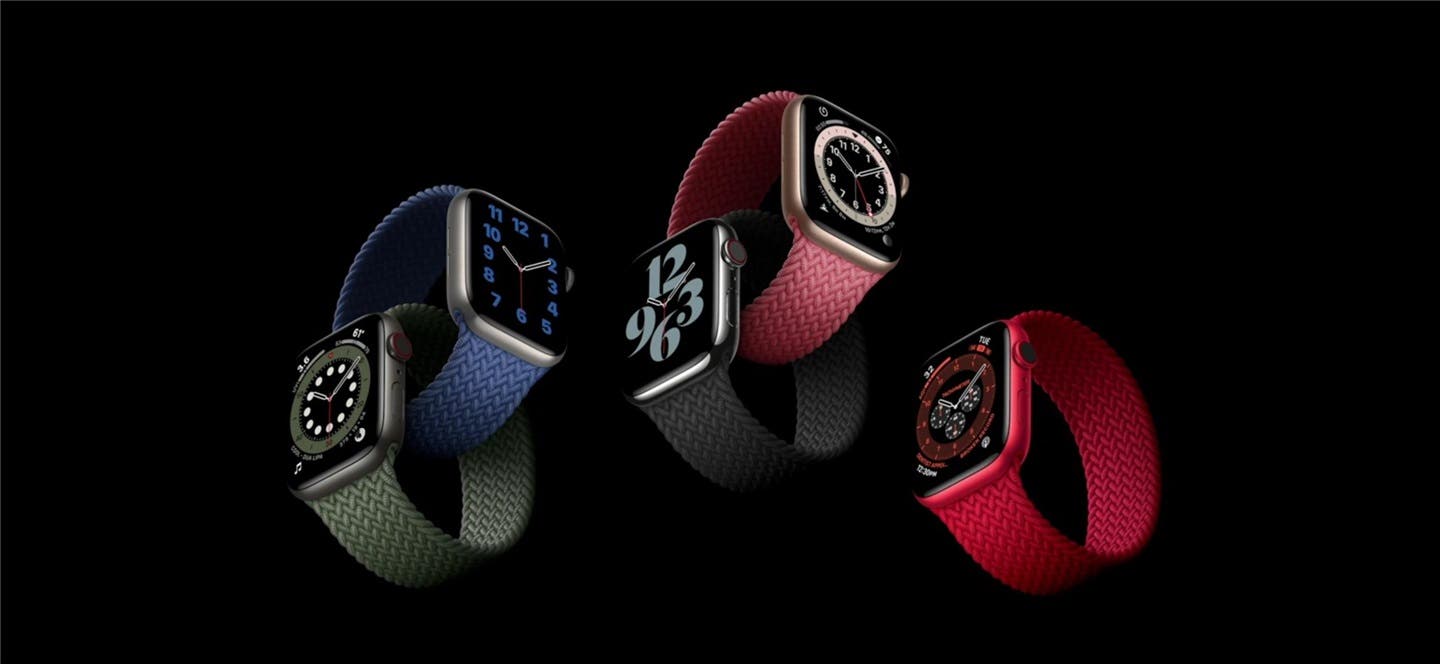
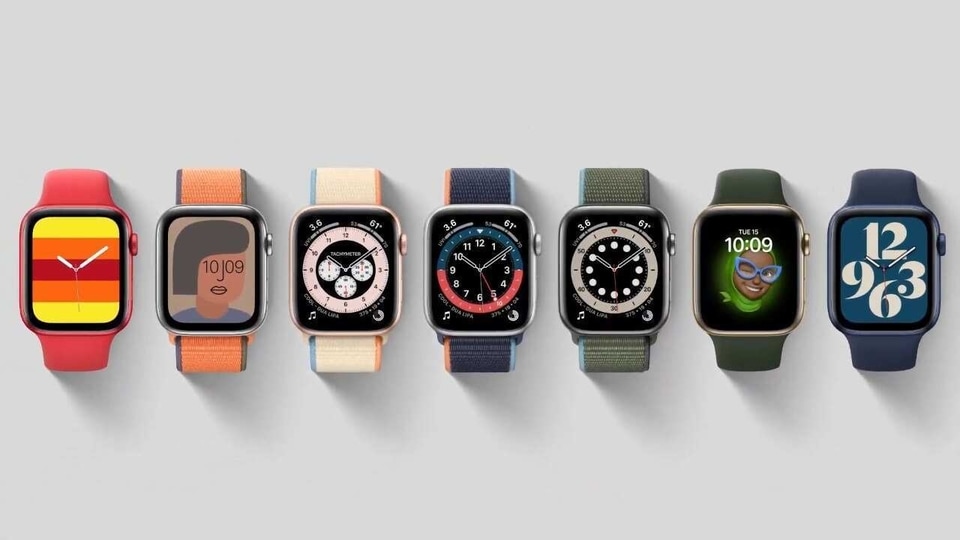

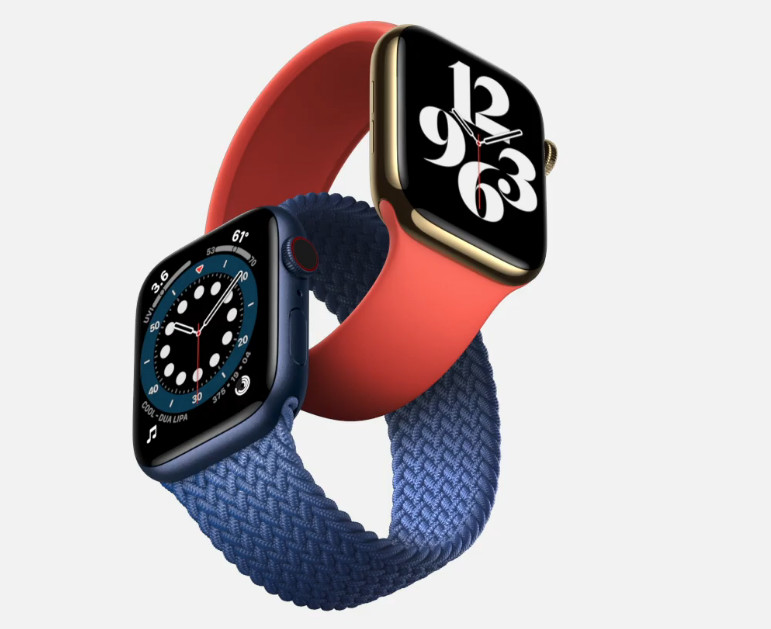

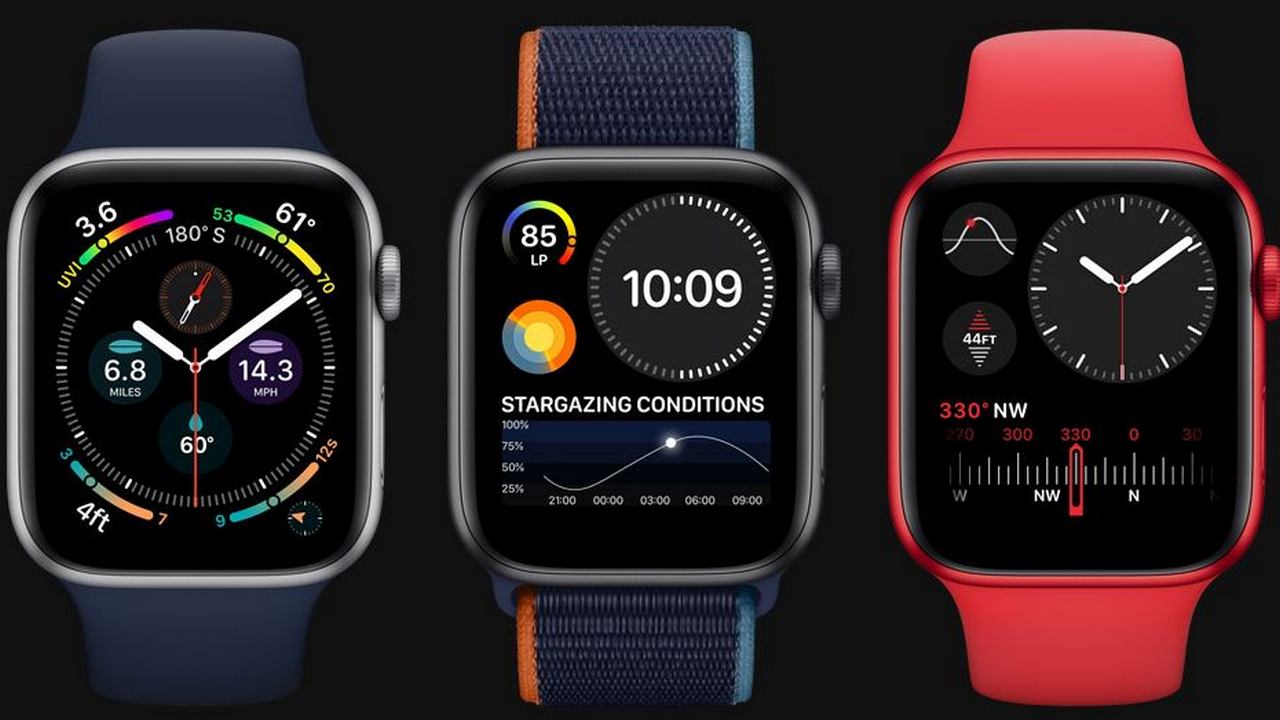








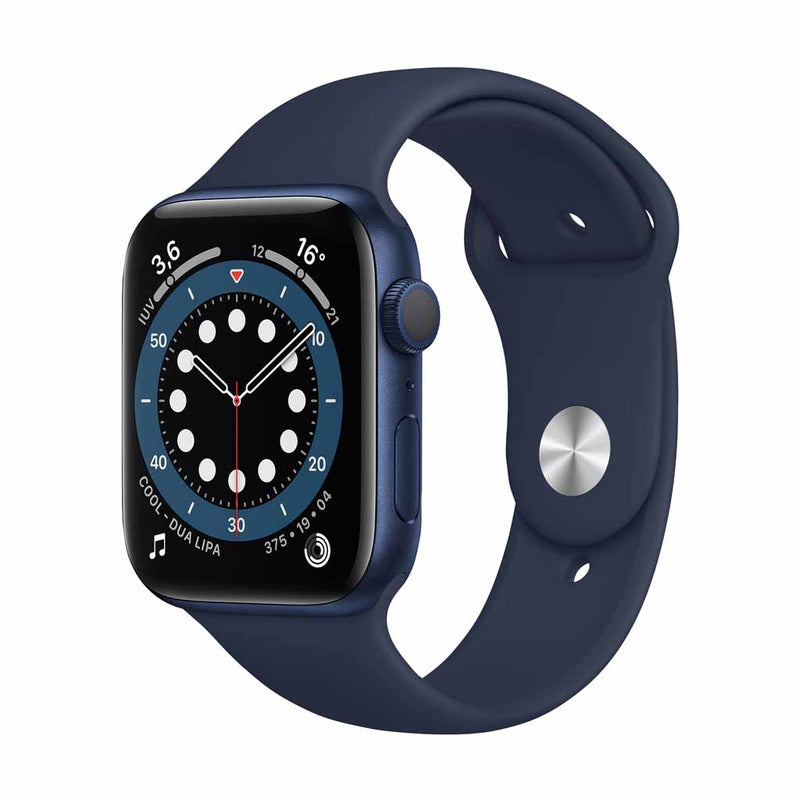
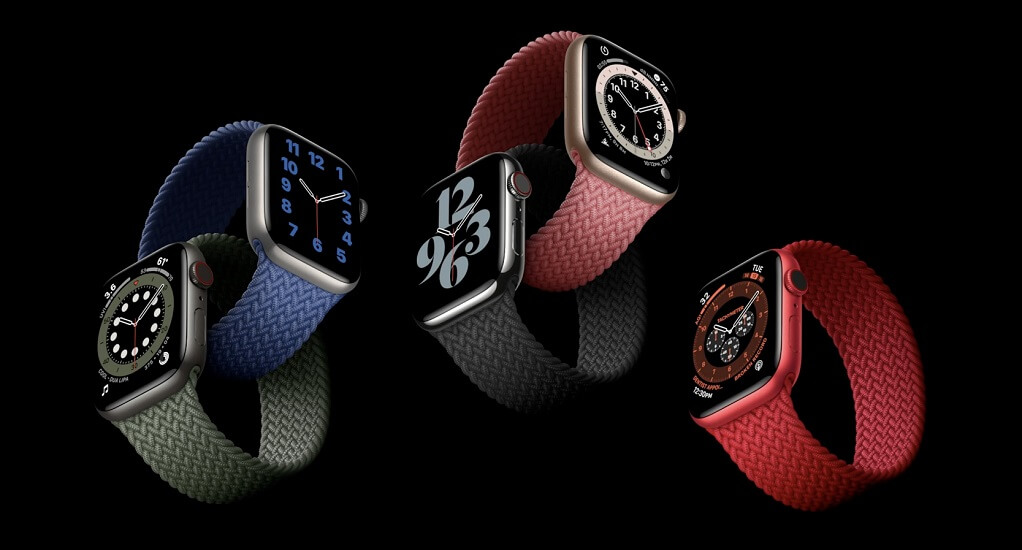











No comments:
Post a Comment
Note: Only a member of this blog may post a comment.